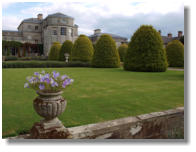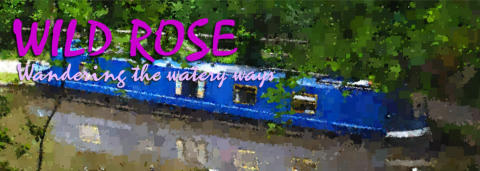

Shugborough Hall
Patrick Litchfield’s real name was Thomas Patrick John Anson, 5th Earl of Lichfield and it was he that
arranged the allocation of Shugborough Hall to the National Trust in 1960 in lieu of death duties.
The core of the Hall was a three story building constructed in 1693. Two pavilions flanking either side of the
central block were added in the 1740’s. At the turn of the 19th century the house was further altered and
extended by architect Samuel Wyatt when a new porticoed entrance front with ten Ionic pillars was created.
Thus the hall as it is seen today is in a neo-classical style and encased in slate sanded to resemble stone.
As I indicated in my blog post the real hero of the story of Shugborough is his Lordship the Admiral George
Anson and the foundation of his wealth was his capture, in 1743, of the Spanish merchantman “Nuestra
Señora de Covadonga” wherein he found 1,313,843 pieces of eight! Now, pieces of eight, also known as the
Spanish Dollar, are silver coins approximately 38mm diameter and worth eight Spanish reales, hence the
name. The modern day equivalent of a Spanish Dollar is approximately £50 thus the value of Anson’s
treasure was roughly 66 million pounds, this in an age when the average wage was, perhaps, 40 old pence
per day! It apparently took over 30 wagons to transport the loot from the London docks to a place of safety.
Not content with that, in 1747 he captured an entire French squadron: four ships of the line, two frigates, and
six merchantmen with a combined value of £300,000. One can only wonder.
I cannot leave the Hall without mentioning the Shugborough Inscription. This is a mysterious sequence of
letters carved on the 18th-century Shepherd's Monument in the grounds. The letters are O U O S V A V V,
above the letters D M. Of course this mystery, “an uncracked code”, has been linked to many things, the
beginning of the world, the end of the world, the Holy Grail, the Knights Templar, I could go on. In fact I
think the solution is clear and it is linked to our friend Admiral Anson and his devotion to his wife who
predeceased him by 2 years. The letters are an initialization of the Latin phrase “Optimae Uxoris Optimae
Sororis Viduus Amantissimus Vovit Virtutibus” ("Best of wives, Best of sisters, a most devoted Widower
dedicates (this) to your virtues")**. On Roman tombs, the letters 'D M' commonly stood for “Dis Manibus”,
meaning "dedicated to the shades”.
** Morchard Bishop-1951
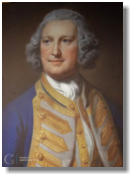
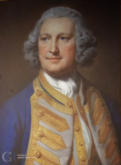
The admirable Admiral Anson
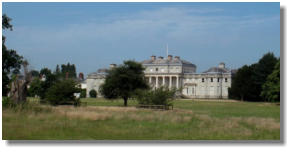
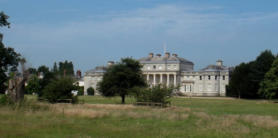
The Hall…
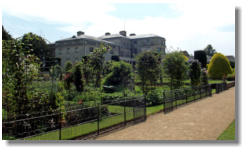
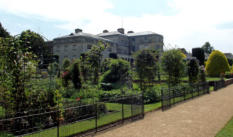
and gardens
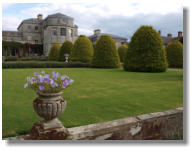
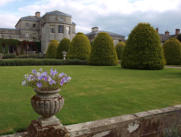





nb Wild Rose

Wandering the Watery Ways…
Shugborough Hall
Patrick Litchfield’s real name was Thomas Patrick John Anson,
5th Earl of Lichfield and it was he that arranged the allocation
of Shugborough Hall to the National Trust in 1960 in lieu of
death duties.
The core of the Hall was a three story building constructed in
1693. Two pavilions flanking either side of the central block
were added in the 1740’s. At the turn of the 19th century the
house was further altered and extended by architect Samuel
Wyatt when a new porticoed entrance front with ten Ionic
pillars was created. Thus the hall as it is seen today is in a neo-
classical style and encased in slate sanded to resemble stone.
As I indicated in my blog post the real hero of the story of
Shugborough is his Lordship the Admiral George Anson and
the foundation of his wealth was his capture, in 1743, of the
Spanish merchantman “Nuestra Señora de Covadonga”
wherein he found 1,313,843 pieces of eight! Now, pieces of
eight, also known as the Spanish Dollar, are silver coins
approximately 38mm diameter and worth eight Spanish reales,
hence the name. The modern day equivalent of a Spanish
Dollar is approximately £50 thus the value of Anson’s treasure
was roughly 66 million pounds, this in an age when the
average wage was, perhaps, 40 old pence per day! It apparently
took over 30 wagons to transport the loot from the London
docks to a place of safety. Not content with that, in 1747 he
captured an entire French squadron: four ships of the line, two
frigates, and six merchantmen with a combined value of
£300,000. One can only wonder.
I cannot leave the Hall without mentioning the Shugborough
Inscription. This is a mysterious sequence of letters carved on
the 18th-century Shepherd's Monument in the grounds. The
letters are O U O S V A V V, above the letters D M. Of course
this mystery, “an uncracked code”, has been linked to many
things, the beginning of the world, the end of the world, the
Holy Grail, the Knights Templar, I could go on. In fact I think
the solution is clear and it is linked to our friend Admiral
Anson and his devotion to his wife who predeceased him by 2
years. The letters are an initialization of the Latin phrase
“Optimae Uxoris Optimae Sororis Viduus Amantissimus Vovit
Virtutibus” ("Best of wives, Best of sisters, a most devoted
Widower dedicates (this) to your virtues")**. On Roman tombs,
the letters 'D M' commonly stood for “Dis Manibus”, meaning
"dedicated to the shades”.
** Morchard Bishop-1951
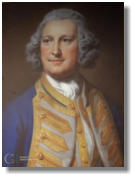

The admirable Admiral Anson
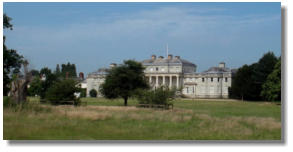

The Hall…
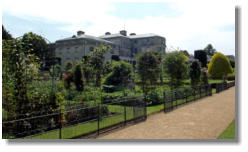

and gardens
